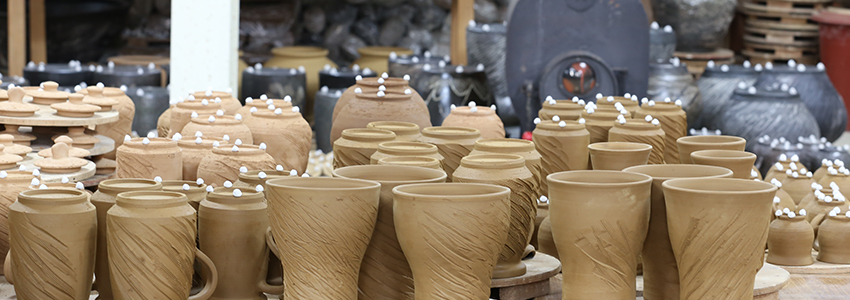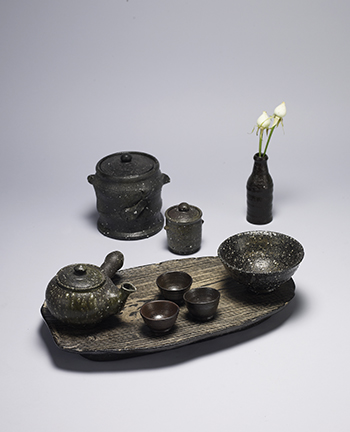 > Pure ware > Onggi ware and Pure ware
> Pure ware > Onggi ware and Pure ware
Onggi ware and ‘Pure ware’

Like celadon and white porcelain, Onggi does not reflect the culture of any other countries but only of Korea. Not only is it indigenous ware to store food, but it’s also used to ferment food, which is a key feature in Korean culinary culture.
Written 甕器 in Chinese characters and pronounced ‘Onggi’ in English, the character 甕 symbolizes a large bellied jar, and 器 symbolizes bowl.
Because Onggi symbolizes a bowl that contains something, even paper bowls and wooden bowls were called Onggi ware in the past.
Today, Onggi refers only to the reddish Oji crocks that store sauces and condiments on Jangdokdae, the traditional Korean platform. Because all other kinds of Onggi are no longer in use and only Oji ware are in continued use today, it has become the representative type of Onggi ware.
Three types of Onggi ware
Clay ware
Smoke is applied in the kiln at 1000℃ or less for a relatively short period of time under 12 hours.
Made with blackish-grey clay called Dongi clay, which is different from clay used to make Onggi ware.
Completed without glaze or lye.
Not sturdy due to the low firing temperature.
Oji ware
A term used since after the 19th century.
First layer of deposit clay is coated with the second layer of Onggi clay
The original term for the reddish pottery commonly seen on Jandgokdae.
Coated with lye, and fired in high temperature under 1200℃
Puraedog
No glaze or lye coating. When the clay is dry, it is fired without bisque firing.
Red clay and white clay are used.
Natural sea salt is added at a high temperature of 1300℃ to increase the preservative function of the work.
Blackish blue smoke (carbon) is added at a high temperature of 1300℃, giving the ‘Puraedog’ the ability to purify air and water, and to deodorize.
The works are dark blue because the smoke is infiltrated into the works.
‘Puraedog’ are luxurious bowls, custom made in the government branch solely in charge of making royal bowls, to be used by the royal family and as royal gifts.
Images or patterns symbolizing the authority of the king are engraved.
